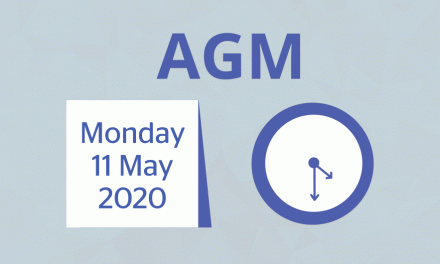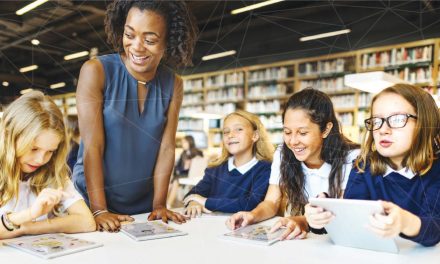Transitioning to continuous online learning: A reflection.
Initiating the transition
The continuing effects of the COVID-19 pandemic and the associated safety measures have required the swift mobilisation of educators to respond in ways we could never have foreseen. The shift to online learning has been multifaceted and has required us to consider our current teaching and learning programs and assessment, as well as if and how they could be transferred to online platforms effectively.
As we have begun to navigate this complex shift and engage with professional networks across Australia, it has become increasingly clear that while schools are addressing this move in different ways, as educators, we are fantastic at supporting each other. It is this collaborative approach that builds collective teacher efficacy and ensures that we are empowered to embrace this new phase in education.
In the late weeks of Term 1, the school where I teach began experimenting with implementing continuous online learning for students across the college. This momentous undertaking provided an invaluable learning experience that has extended our understanding of effective teaching, learning and collaborative practices, as well as provoking constructive conversations about best practice. In the spirit of collaboration, some reflections from this brief engagement with continuous online learning are outlined below.
Personalising the learning journey
The importance of face-to-face communication and connections for progressing learning is no secret. John Hattie’s research has noted the high impact of constructive student–teacher relationships. One of the key challenges in the transition to continuous online learning was how to maintain these constructive relationships via an online platform, particularly when learning was asynchronous. The strategies described below were found to be effective ways of personalising the learning for students and of contextualising their learning experiences.

Figure 1
- The use of avatars
Although a teacher’s personality is hard to replicate, it is essential when connecting with students. The use of avatars such as Bitmojis (Figure 1) has proved to be a fun way to start off a lesson when combined with a simple personalised greeting to the class or an explanation of the lesson. The avatars facilitate positive connections between the students and the teacher, and can be customised to reflect the theme of the lesson. They also add an element of humour to the lesson, bolstering both teacher and student wellbeing.
- The use of brief teacher-created audio or video clips to preface a lesson
While it sometimes seems that students do not listen, do not underestimate the importance of the teacher’s voice. In this new online environment, students are appreciative and receptive to hearing their teachers’ voices, particularly when video-chat is not available. The use of brief audio and/or video recordings have been found to be an efficient way to greet students, to introduce learning intentions and learning experiences, and to wrap up lessons. These recordings need not be extensive—a 30-second snippet can make all the difference in personalising a lesson.
- The use of teacher-created videos to explain the lesson content and learning journey
Videos have been used successfully to communicate key concepts, to rouse interest in the learning experiences, and to recap learning over the week (Figures 2 and 3).
Figure 2
Figure 3
Figure 4
In a time when there are so many new things for teachers to learn, it was important to be able to create these videos using simple software that was familiar and available. The videos created for lessons were constructed in PowerPoint and included voice-over recording on the slides in addition to screen-captured videos of worked examples (screen-recording is a PowerPoint feature).
They also include recorded videos of the teacher or other elements from a webcam or phone inserted into the slides (Figure 4). Once completed, the PowerPoint presentation is easily able to be exported into video format from the PowerPoint recording tab. Videos used across the week ranged in length from 90 seconds to 16 minutes. It was evident from student feedback that videos were invaluable; however, at times some of them may have been a little too long.
Curating learning experiences
The curation of learning experiences requires consideration of a number of factors, including but not limited to the diversity of student learning needs and their home environments (for example, access to resources, times for accessing learning, and access to parent/guardian support). This is quite the balancing act!
As feedback from parents and students reported in the media throughout the past few weeks has demonstrated, it is imperative that learning expectations are clear and manageable, and that students are engaged in a variety of learning experiences—continually providing content-focused worksheet after worksheet is not conducive to effective and engaging online learning.
- Varied, engaging learning experiences
Learning experiences—whether online, via email or in worksheet format—need to be varied, providing opportunities for students to engage with a range of resources and ways of learning.
Across our experience with continuous online learning, students engaged in learning activities including
- summarising and reflecting on text and video resources
- engaging in design challenges
- using videorecorded exemplars to practise practical skills and offer helpful tips to classmates
- sketching
- testing and sharing design ideas
- responding to stimuli in online forums.
These varied activities ensured that students’ learning experiences were interactive, not monotonous, and met the diverse needs of the learners.
Among the online professional networks, copious resources are available in the new Fashion for the Sun resource www.fashionforthesun.com.au, complete with worksheets designed to engage students in a range cognitive experiences that support the development of their knowledge, understanding and skills.
- Cultivating a transparent and supportive online-learning space
An additional consideration is the independent nature of online learning. A transparent and fluid online-learning space is essential to ensure that students and their families can:
- easily access the learning experiences
- understand their intent
- effectively engage in the lesson.
One key strategy to support the contextualisation of students’ learning is the documentation and explanation of explicit and specific learning intentions and success criteria. Learning intentions and success criteria provide a purpose for the lesson and empower students to take active roles in ensuring they are successful for each lesson.
A clear lesson structure is also imperative so that students can follow the flow of activities and differentiate their experiences as needed. This could be developed through a variety of online and offline tools, using clear layouts and establishing consistent online-learning expectations.
Exemplars are also vital to enhance student understanding of concepts, skills and expectations. Using the, ‘I Do, We Do, You Do’ model has proved to be a simple and effective pedagogical approach to support student learning and outcomes, which can be facilitated within and across lessons.
Monitoring and providing feedback on learning
One of the biggest challenges of continuous online learning is monitoring and providing feedback to students on their learning, which in turn affects our approach. As teachers in the classroom, we are constantly receiving and providing feedback to students throughout face-to-face lessons through facial expressions, conversations, and observing student work and interactions. In an asynchronous learning mode, this is not possible and new ways need to be explored. When developing ways to collect, monitor and provide feedback to students on their work and learning, it was important that the tools were accessible and easy to use. Both teachers and students used the following tools effectively.
- Collaborative whiteboard
The use of collaborative software such as Microsoft Whiteboard was amazing! From a teacher’s perspective, the whiteboards were easy to set up—requiring only a few clicks to get a sharable link to embed into a lesson. It was exciting to see student work appearing in real time and being able to easily ‘Like’ and comment on student work at our own pace.
What was especially useful was that as the whiteboard link was shared across all classes for the year level and subject, students were seeing and commenting on work from peers across classes in addition to receiving feedback from all teachers of that subject (Figures 5 and 6).
Students found the platform accessible and engaging, particularly as the platform allowed them to sketch or type directly into the whiteboard and add content from a variety of media including images, Word documents, PDFs, visible-thinking templates etc.
Figure 5
Figure 6
Figure 7
- Padlet
Padlet is similar in its collaborative capacity, allowing students to contribute posts that include images and text (Figure 7). As it does not facilitate as many sketching features as Padlet, Microsoft Whiteboard was mainly used to initiate conversations about learning resources and questions. The Padlet tool easily allows for student and teacher feedback such as ‘Likes’ and comments.
It is important to note that these are unprecedented times in which teachers, students and their families are all feeling under pressure. The teacher’s key role is to support students in their learning journeys. This learning journey is different for every student and in times such as these it is imperative that we consider the effect of this uncertain climate on students and their families. As home economics professionals, the wellbeing of individuals and families is core to our practice. So too should it be when interacting with students and monitoring their progress. For some, the transition to online learning will be smooth; for others, learning may not be their current top priority, depending on their own health and wellbeing and that of their families. We need to embrace a flexible and empathetic approach as we move forward to ensure that learning and wellbeing are appropriately balanced and supported for all students.
Shaping the way forward
The transition to online learning is being shaped by our practices. It is important to not become overwhelmed by the plethora of digital tools and the expectations that come with their use. Each teacher will address the shift in their own way, suited to their pedagogy and students. As we continue to advance into an increasingly online-learning mode, it is imperative that we maintain our collaborative professional-learning networks and support each other through our trials, challenges and successes. HEIA(Q) has its own Facebook group that is humming with fantastic resources, as are the various Facebook groups set up for each of the subject areas related to Home Economics.
Rosie Sciacca
John Paul College, Daisy Hill












